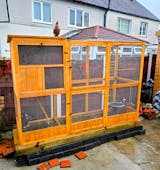
Allotment 101 - An introduction to knowing your plot and how to manage it.
Share
You, like a growing number of keen growers have begun to understand the joys and benefits of being able to grow your own fruit and vegetables. The demand for allotments have not been as high as they are now for decades as we begin to understand the benefits of tuning into our ability to sow, grow and harvest food that is better quality, better tasting and far kinder to our environment than the mass produced equivalent which is often farmed and packed many hundreds of miles away and often at great detriment to local communities and land.
We've written our Allotment 101 to help give you some information about getting started and how to begin preparing your plot.
If you have little knowledge of the plot before you were able to take it on it's worth taking some time to understand how it was used before and what areas or crops were a success (or not). Speaking to your neighbouring allotment keepers is a great way to get a feel for the plot and they will more than likely be happy to offer advice on their own experiences which will give you a good head start in knowing the strengths and weaknesses of the plot.
Unless the plot has been neglected and is overrun, meaning your first job will be to clear it we advise to take your time and simply experiment, your first year should be fun and a big learning curve, each year your knowledge and ability to grow should develop and your confidence increase. We advise keeping a log or notes about what has worked or what hasn't as you go...it'll be a helpful guide year on year as you begin to understand your allotment plot.
You will need to consider the placement of the plot when planning crops and the type of plants that will be best suited to growing there. For example, you should consider if it is on high or low ground, is the area sloped and if so where does your plot sit on the slope? Throughout the year you should track the sun in all seasons, so you understand the areas that get the most and least sun and use this information to get the best out of your crops.
Putting in the work early to understand the soil, its nutrients, texture, and density will go a long way to helping you avoid failed crops. Your plot neighbours will hopefully have a good insight into this and it's worth asking for information or buying a PH testing kit to check the soil yourself. Depending on whether the soil is clay or sand like there are ways you can improve it if you need to.
Whilst you might have an overall knowledge of your local areas weather each year there can be variations that mean plans are accelerated or delayed - such as an unusually mild winter or conversely a late but brutal spell of snow and frost. There are ways this can be managed, such as helping to keep soil warmer through plastic sheeting in late Winter or by the additional of a polytunnel to your allotment. These can allow you to get a great head start on germination and seedling development whilst waiting for the signs that the final frost of the year has long gone.
It's an existing time, being the proud owner of an allotment plot and your enthusiasm for those first crop yields is understandable, but it’s important to take the time to really understand what is and isn't working each month. Your knowledge & confidence will grow month on month and even when you make mistakes or things do not go to plan it should be used as an opportunity to learn about your plot.
We've compiled some guides on plot layouts, crop rotation and essential tools for further reading.


